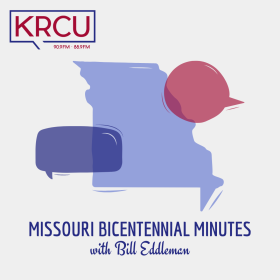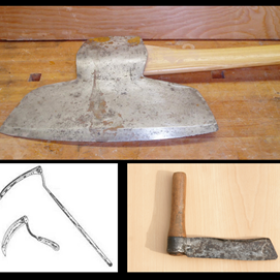
Missouri Bicentennial Minutes
Southeast Missouri had a key role in the road to Missouri statehood in 1817-1821. The events leading to statehood, and some of the events, people, and lifeways in the area may be unfamiliar to many modern-day Missourians. Currently, Missouri is celebrating its Bicentennial, and this program aims to summarize the events leading to statehood, some of the factors affecting Missouri’s entry into the Union, and how people lived and worked during that time 200 years ago.
Latest Episodes
-
Governor McNair signed the bill selecting the site of the new state capital on December 31, 1821. Missouri is the only state to have a capital founded solely for that purpose.
-
Imagine a Christmas with no Christmas tree, no Santa Claus, no Christmas stockings, no holiday cards, no gift exchanges, no poinsettias, and in some communities, little recognition of the day at all.
-
The General Assembly formed a number of counties in the year of statehood. Among these were two designated in December 1821 in southeast Missouri: St. Francois and Scott.
-
The year 1821 was also an eventful year in world history. In the U. S., James Monroe began his second term as President. Spain sold and formally transferred Florida to the U. S. Russia proclaimed sovereignty over the northwestern part of North America, an area we know as Alaska.
-
The role of women in 1821 varied with ethnic and economic status. Women in French settlements held a dominant role in the family.
-
We continue our look at unfamiliar items in the estate of John Whittenburgh.
-
Examining lists of property of deceased people provides windows to the past. The next two Bicentennial Minutes will examine the estate inventory of John Whittenburgh of Cape Girardeau County. Whittenburgh was a wealthy man who died in August 1821.
-
Livestock are valuable for food, fiber, and economic security--even more so in 1821.
-
Most farms were subsistence-level at statehood. Larger farms were possible with either a large family or with the labor of the enslaved. Settlement followed valleys at first, or clustered in level or open uplands. Later settlers adapted to hill country by using small corn plots and open-range grazing.
-
Most farms were subsistence-level at statehood. Larger farms were possible with either a large family or with the labor of the enslaved. Settlement followed valleys at first, or clustered in level or open uplands. Later settlers adapted to hill country by using small corn plots and open-range grazing.









